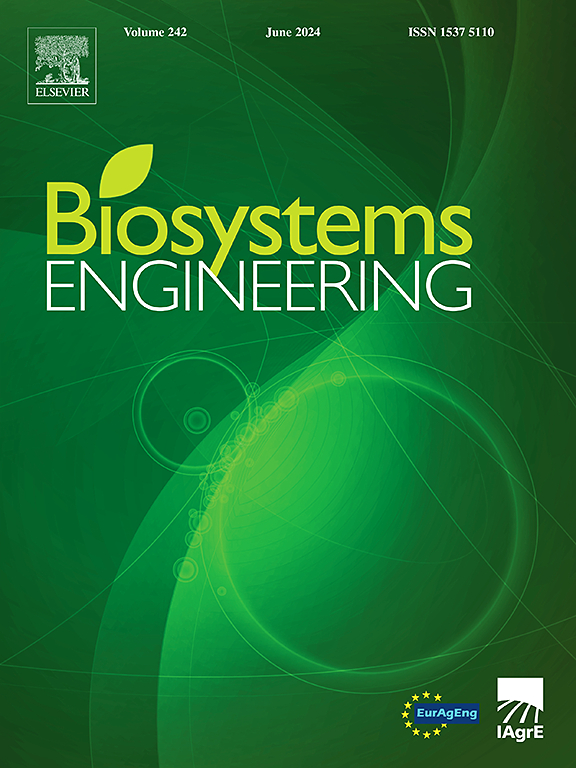LettuceP3D: A tool for analysing 3D phenotypes of individual lettuce plants
IF 4.4
1区 农林科学
Q1 AGRICULTURAL ENGINEERING
引用次数: 0
Abstract
Lettuce is one of the major raw vegetables in the world, with diverse species and large differences in morphological structures. Achieving automated, high-throughput acquisition and intelligent analysis of 3D lettuce phenotypes using advanced phenotyping techniques and equipment is of great significance. Based on the high-throughput phenotyping platform MVS-PhenoV2 installed in a plant imaging room, this study constructed a method for automated analysis of 3D phenotypes of lettuce around the needs of lettuce DUS (distinctiveness, uniformity, and stability) testing and feature digitisation. Aiming at the characteristics of lettuce leaves which are mostly curved, the point cloud segmentation model SoftGroup was improved, which can realise lettuce single plant segmentation and leaf segmentation with high accuracy. Additionally based on lettuce 3D point clouds, plant orientation correction algorithm, leaf hole completion algorithm, leaf vein extraction algorithm, and leaf margin extraction algorithm were proposed. Finally, a pipelined automated analysis software tool LettuceP3D was developed for automated analysis of lettuce 3D phenotypes, which can automatically analyse 16 phenotypic indicators related to lettuce plant (e.g. plant height, plant width, and compactness) and leaf (e.g. leaf length, leaf margin perimeter, and leaf margin undulation) phenotypic characteristics. The study was validated on seven types of lettuce: Butterhead, Crisphead, Looseleaf, Oakleaf, Romaines, Stem, and Wild Relatives. Results show that the mIoU for plant and pot semantic segmentation reaches 97.2%, and the AP for leaf instance segmentation reaches 86.7%. Through comparison with measured values, the average of the algorithm exceeds 0.95. The software operates without manual interaction, processing single plant data in approximately 2s, which demonstrates a high processing efficiency. This phenotype analysis method proposed in this study is applicable for quantifying the morphological characteristics of lettuce in seven types, providing quantitative indicator data support for lettuce DUS testing, variety identification, and multi-omics studies.
求助全文
约1分钟内获得全文
求助全文
来源期刊

Biosystems Engineering
农林科学-农业工程
CiteScore
10.60
自引率
7.80%
发文量
239
审稿时长
53 days
期刊介绍:
Biosystems Engineering publishes research in engineering and the physical sciences that represent advances in understanding or modelling of the performance of biological systems for sustainable developments in land use and the environment, agriculture and amenity, bioproduction processes and the food chain. The subject matter of the journal reflects the wide range and interdisciplinary nature of research in engineering for biological systems.
 求助内容:
求助内容: 应助结果提醒方式:
应助结果提醒方式:


